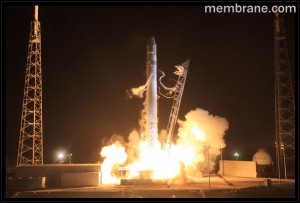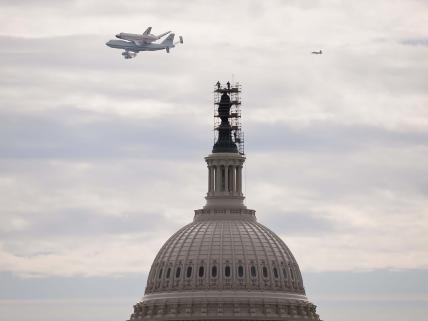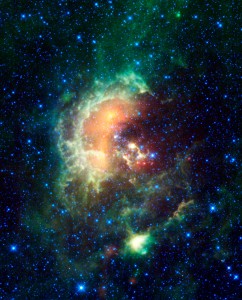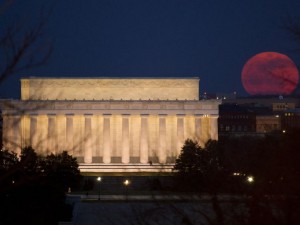Space X Launches Historic Mission
Tuesday, May 22nd, 2012
Space X Rocket Launch
Hawthorne, CA – Today, Space Exploration Technologies (SpaceX) successfully launched its Falcon 9 rocket carrying a Dragon spacecraft to orbit in an exciting start to the mission that will make SpaceX the first commercial company in history to attempt to send a spacecraft to the International Space Station — something only a handful of governments have ever accomplished.
At 3:44 a.m. Eastern, the Falcon 9 carrying Dragon launched from SpaceX’s launch pad at the Cape Canaveral Air Force Station. Now, the Dragon heads toward the International Space Station. On that journey, it will be subjected to a series of tests to determine if the vehicle is ready to berth with the station.
Broadcast quality videos, including video inside of the SpaceX factory, may be downloaded at vimeo.com/spacexlaunch and high-resolution photos are posted at spacexlaunch.zenfolio.com.
At a press conference held after the launch, SpaceX CEO and Chief Designer Elon Musk began, “I would like to start off by saying what a tremendous honor it has been to work with NASA. And to acknowledge the fact that we could not have started SpaceX, nor could we have reached this point without the help of NASA… It’s really been an honor to work with such great people.”
The vehicle’s first stage performed nominally before separating from the second stage. The second stage successfully delivered the Dragon spacecraft into its intended orbit. This marks the third consecutive successful Falcon 9 launch and the fifth straight launch success for SpaceX.
“We obviously have to go through a number of steps to berth with the Space Station, but everything is looking really good and I think I would count today as a success no matter what happens with the rest of the mission,” Musk said.
He continued by expressing his gratitude to the more than 1,800 SpaceX employees. “People have really given it their all.” Describing the scene inside of SpaceX headquarters in Hawthorne, California, he said, “We had most of the company gathered around SpaceX Mission Control. They are seeing the fruits of their labor and wondering if it is going to work. There is so much hope riding on that rocket. When it worked, and Dragon worked, and the solar arrays deployed, people saw their handiwork in space operating as it should. There was tremendous elation. For us it is like winning the Super Bowl.”
Explaining the significance of the day, Musk stated, “This mission heralds the dawn of a new era of space exploration, one in which there is a significant commercial space element. It is like the advent of the Internet in the mid-1990s when commercial companies entered what was originally a government endeavor. That move dramatically accelerated the pace of advancement and made the Internet accessible to the mass market. I think we’re at a similar inflection point for space. I hope and I believe that this mission will be historic in marking that turning point towards a rapid advancement in space transportation technology.”
This is SpaceX’s second demonstration flight under a 2006 Commercial Orbital Transportation Services (COTS) agreement with NASA to develop the capability to carry cargo to and from the International Space Station. Demonstration launches are conducted to determine potential issues so that they might be addressed; by their very nature, they carry a significant risk. If any aspect of the mission is not successful, SpaceX will learn from the experience and try again.
Mission Highlights: During the mission, Dragon must perform a series of complex tasks, each presenting significant technical challenges (dates subject to change):
- May 22/Launch Day: SpaceX’s Falcon 9 rocket launches a Dragon spacecraft into orbit from the Cape Canaveral Air Force Station.
- May 23: Dragon orbits Earth as it travels toward the International Space Station.
- May 24: Dragon’s sensors and flight systems are subjected to a series of complicated tests to determine if the vehicle is ready to berth with the space station; these tests include maneuvers and systems checks in which the vehicle comes within 1.5 miles of the station.
- May 25: NASA decides if Dragon is allowed to attempt berthing with the station. If so, Dragon approaches. It is captured by station’s robotic arm and attached to the station, a feat that requires extreme precision.
- May 25 – 31: Astronauts open Dragon’s hatch, unload supplies and fill Dragon with return cargo.
- May 31: After approximately two weeks, Dragon is detached from the station and returns to Earth, landing in the Pacific, hundreds of miles west of Southern California.
About SpaceX
SpaceX designs, manufactures and launches the world’s most advanced rockets and spacecraft. With a diverse manifest of 40 launches to deliver commercial and government satellites to orbit, SpaceX is the world’s fastest growing launch services provider. In 2010, SpaceX became the first commercial company in history to put a spacecraft into orbit and return it safely to Earth. With the retirement of the space shuttle, the SpaceX Falcon 9 rocket and Dragon spacecraft will soon carry cargo, and one day astronauts, to and from the Space Station for NASA. Founded in 2002 by Elon Musk, SpaceX is a private company owned by management and employees, with minority investments from Founders Fund, Draper Fisher Jurvetson, and Valor Equity Partners. The company has over 1,800 employees in California, Texas, Washington, D.C., and Florida. For more information, visit www.SpaceX.com.



